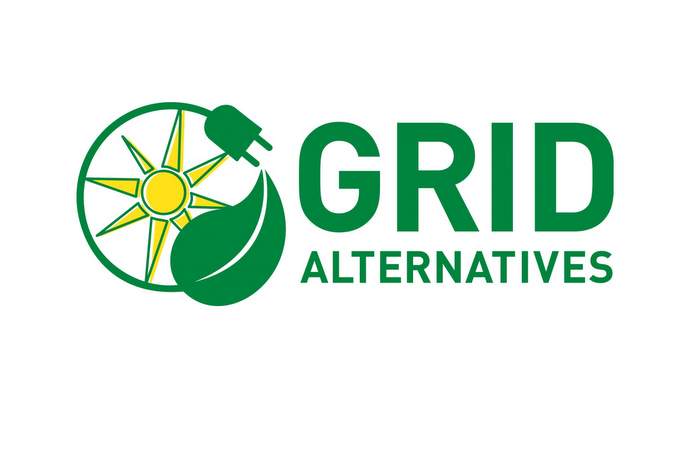The California Department of Community Services and Development (CSD) announced final awards totaling $4.4 million to GRID Alternatives for two Community Solar Pilot projects in Contra Costa and Riverside Counties. These first-in-California low-income community solar projects are part of California Climate Investments and will make the cost-saving benefits of solar energy accessible to more low-income households while contributing to California’s efforts to reduce greenhouse gas emissions.
“CSD is excited to have the opportunity to pilot new program models like community solar to help ensure that the investments the state is making to fight climate change continue to benefit all Californians,” said CSD Director Linné Stout. “The innovative projects that are being funded under the Community Solar Pilot Program will deliver financial savings to low-income households that otherwise can’t be served by existing solar programs, while also reducing greenhouse gas emissions.”
Program details
The Community Solar Pilot Program, part of CSD’s Low-Income Weatherization Program (LIWP), is designed to reduce energy costs for households that are not currently able to benefit from existing low-income solar programs. Most Californians face barriers to traditional rooftop solar, including those who rent, don’t have a roof suitable for solar, who live in an apartment building, or lack financing options.
Well-designed community solar increases access to clean renewable energy by enabling multiple households or buildings to participate in a larger scale shared solar installation located in their community. The goal of CSD’s Community Solar Pilot Program is to provide funding for the implementation and testing of models to deliver community solar to low-income households in innovative ways that have the potential to be replicated elsewhere and to scale, reduce greenhouse gas and toxic air emissions, reduce household energy costs, and provide workforce development opportunities and other co-benefits to communities.
“Community solar can provide more equitable access to renewable power and the clean energy economy. We’re thrilled to be part of California’s first community solar projects which will exclusively benefit low-income families,” said Stan Greschner, chief policy and business development officer with GRID Alternatives. “Not only will the Community Solar Pilot Program directly lower residents’ energy costs and provide workforce development opportunities in low-income communities, but these projects will be models for scalable programs in the future.”
GRID’s projects
Following a competitive procurement, CSD selected two projects led by GRID Alternatives to receive funding under the Pilot. GRID has partnered with the Santa Rosa Band of Cahuilla Indians and City of Richmond for these community solar projects.
GRID Alternatives Inland Empire was awarded $2.05 million to install a 994 kilowatt (kW) ground mounted solar array in partnership with the Santa Rosa Band of Cahuilla Indians and the Anza Electric Cooperative, Inc. The community solar system will be sited on Santa Rosa Tribal lands in Riverside County, an area designated as a low-income community, and will benefit approximately 38 homes on tribal land and 150-250 other low-income households served by Anza Electric. The project is expected to produce more than 42,000,000 kilowatt hours (kWh) of energy over the next 30 years and provide up to $5.4 million in savings to participants over the life of the project.
“The Santa Rosa Band of Cahuilla Indians is proud to partner with Anza Electric Cooperative and GRID Alternatives to provide clean energy to not only Tribal Members, but also other surrounding mountain community members,” said Tribal Chairman, Steven Estrada. “We are thankful for the opportunity to facilitate this project by using our tribal lands in a sustainable way.”
GRID Alternatives Bay Area was awarded $2.38 million to install a 989 kW solar array in partnership with the City of Richmond. The community solar system will be sited at the Port of Richmond and demonstrates how solar can play a key role in decarbonizing California’s ports. The project will benefit 155 low-income households in designated disadvantaged communities in Richmond. Approximately 80 to 95 percent of subscribers are anticipated to be residents of affordable housing properties near the Port of Richmond that are not good candidates for rooftop solar; and who will receive direct financial benefits equal to approximately 75 percent of typical renter electricity costs. The remaining 5 to 20 percent of subscribers will be local renters and homeowners that are not able to benefit from existing low-income solar programs. The community solar project is expected to generate approximately $81,000 per year in revenue over 20 years for distribution to local low-income households.
“This is a perfect example of how cities can leverage land use authority and community choice energy programs to spur local clean energy development,” said Richmond Mayor Tom Butt. “There is a rich history of shipbuilding and manufacturing at the Port of Richmond during the WWII era, now we’re using that same innovative spirit to build renewable energy systems that offset residents’ energy costs.”
Each community solar project will provide solar installation training and meet specific local hiring and wage requirements. For the Santa Rosa project, residents from the Santa Rosa Band will participate in paid job training opportunities during the solar installation. Both projects are estimated to be completed by the first quarter of 2021.
— Solar Builder magazine


Leave a Reply
You must be logged in to post a comment.